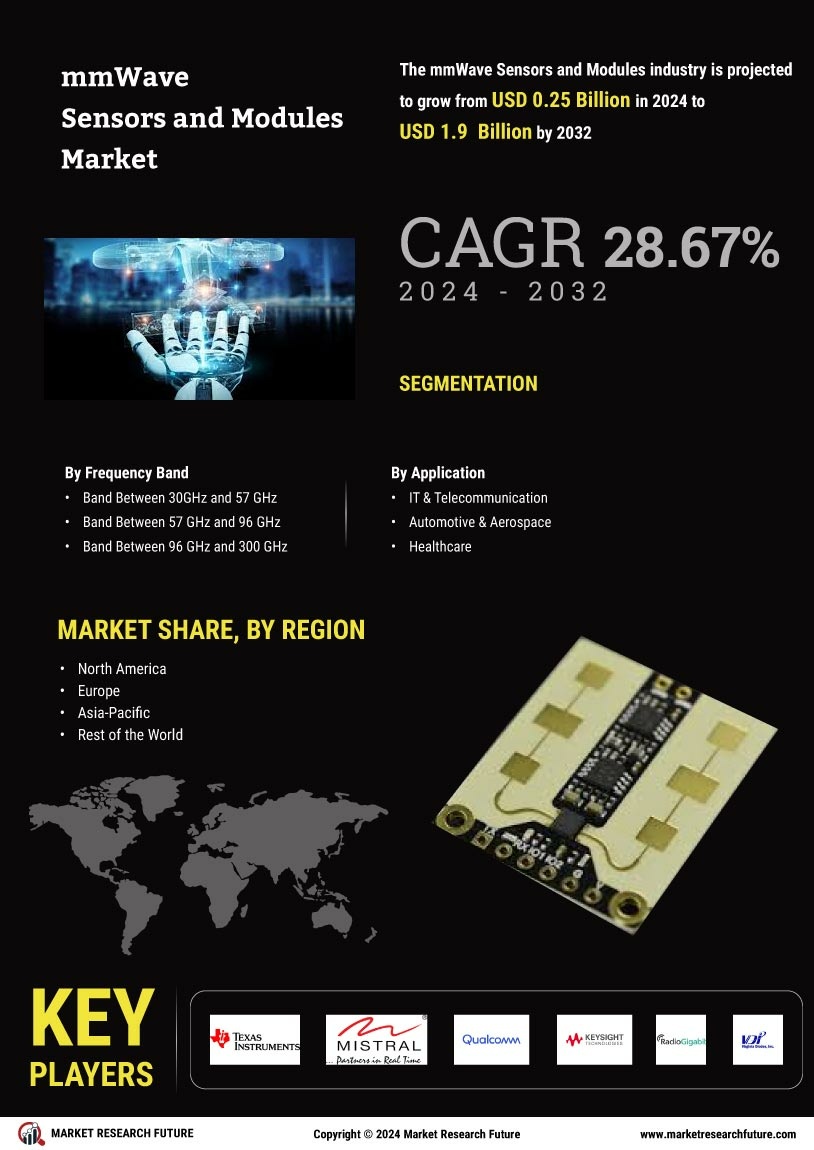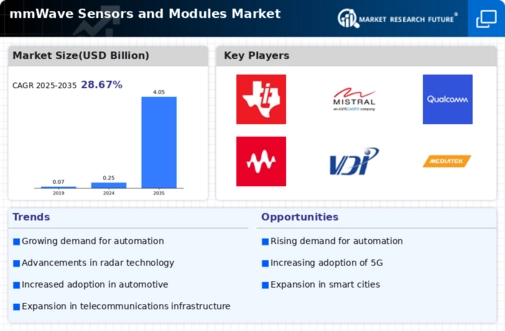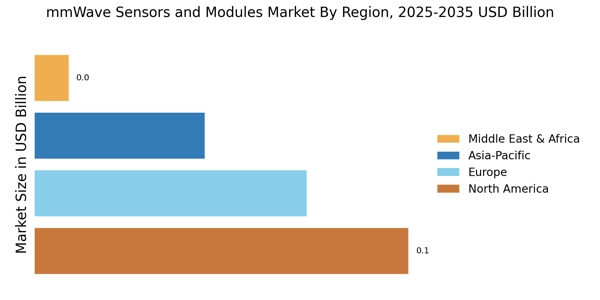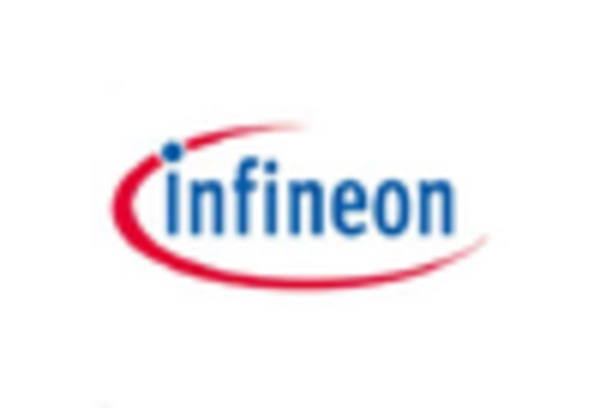Leading market players are investing heavily in research and development to expand their product lines, which will help the mmWave Sensors and Modules market, grow even more. Market participants are also undertaking several strategic activities to expand their global footprint, with important market developments including new product launches, contractual agreements, mergers and acquisitions, higher investments, and collaboration with other organizations. To expand and survive in a more competitive and rising market climate, the mmWave Sensors and Modules industry must offer cost-effective items.
Manufacturing locally to minimize operational costs is one of the key business tactics manufacturers use in the global mmWave Sensors and Modules industry to benefit clients and increase the market sector. In recent years, the mmWave Sensors and Modules industry has offered some of the most significant advantages to the military and defense. Major players in the mmWave Sensors and Modules market, including Texas Instruments, Mistral Solutions Pvt.
Ltd., Qualcomm Inc., Keysight Technologies, Radio Gigabit Inc.,Virginia Diodes, MediaTek Inc., NOVELIC LLC, Pulsar Process Management Ltd., Infineon Technologies AG, and others, are attempting to increase market demand by investing in research and development operations.
SMK is well-connected, a master of many trades, and a switch-hitter in electronics. The 1929-founded company produces a range of electronic parts, including connectors, power supplies, switches, jacks and plugs, and terminals. The company also produces input devices for computers and appliances, such as keyboards, control panels, touch screens, and remote controls. Almost 75% of SMK’s revenue comes from audio-visual and communication goods. Other producers of industrial items and electronics are among its clients. Although roughly 80% of SMK’s profits come from Japan and Asia, the company has manufacturing facilities and sales offices across 20 nations.
For Example: In January 2023, A new Milweb TM mmWave sensor technology and solution were released by SMK Electronics Corporation. The Milweb Wave Sensor uses the company’s unique algorithms to distinguish objects, surfaces, approaching terrain, and even, up close, a person’s pulse rate and respiration. This adaptable new sensor technology has uses in constructing automobiles, healthcare products, and safety equipment.
FASTWEB S.p.A. is an Italian telecommunications organization that offers fixed and mobile telephony, IPTV services, and broadband Internet. One of the well-known organizations in Italy offering FTTH connections is Fastweb. Swisscom AG, a Swiss telecommunications corporation, owns all of Fastweb. Organizations contribute to the country's digitization with digital solutions and ultra-broadband networks to improve the quality of life. Organizations ensure data protection and maximum transparency. Organizations provide everyone with the most suitable training tools to participate in the digital revolution and seize opportunities. Its work environment is dynamic and inclusive.
For Instance: one of Italy's biggest telecom providers, Qualcomm Technologies, Inc., announced plans to market fixed wireless access (FWA) 5G standalone (SA) mmWave on the Qualcomm 5G mobile broadband wireless access platform Gen2. By the end of 2025, the coordinated efforts should enable Fastweb to quickly expand the coverage of its FWA installations and contribute to bringing the full benefits of 5G to almost twelve million households and businesses in Italy.
















Leave a Comment